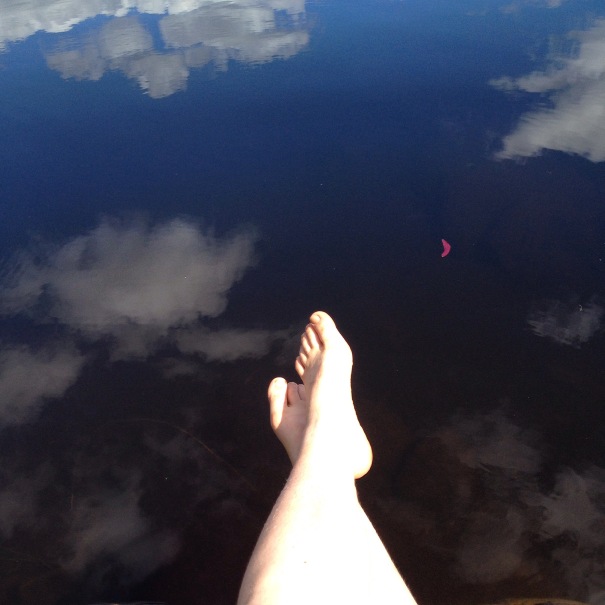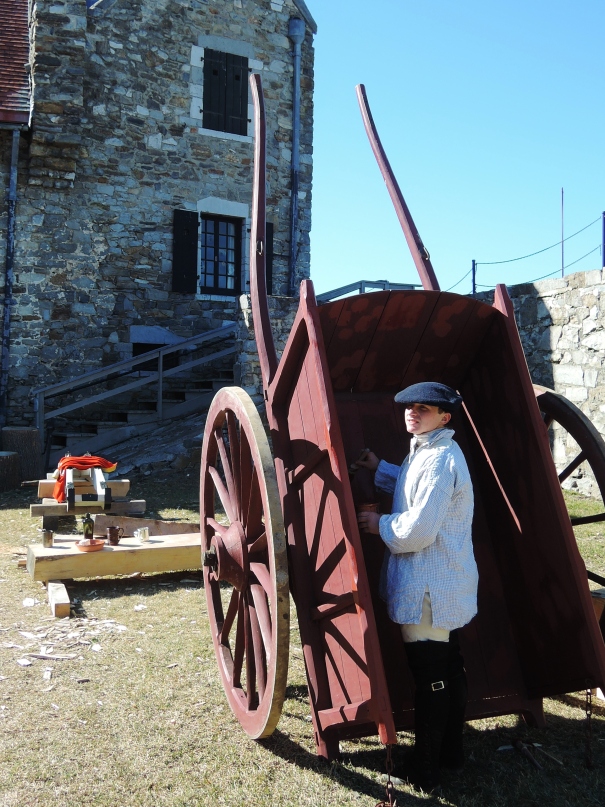
Mom: “I noticed you stopped shaving your legs, and I was wondering-“
Me: “-If that was because of laziness, or history, or feminism?”
Mom: “Yeah.”
Me: “All three, I guess”
I had this conversation with my mother last fall, a time of year when a New Englander whose primary social scene is folk dancing hippies can easily avoid ridicule for having hairy legs. As both warm weather and tourist season approach, however, I’m thinking more about the state of my calves.
The museum will be opening in May, at which time the staff – myself included – will transition from research to recreation. For 40 hours a week we’ll transform ourselves into a stinky and hard-working eighteenth-century army. That’ll make me a raggedy camp follower, or soldier’s wife, a role in which I may well lack a decent pair of shoes. No shoes means no stockings, no stockings means bare legs. You’ll have figured out my dilemma by now: it is a struggle between modern conventions of beauty and historical accuracy. Usually spring is a time for renewed attention to one’s legs, prior to sundress season. However, 250 years ago a woman too poor to own shoes surely does not expend her few resources on depilation. A true recreation of her appearance would involve leg hair. And not stubble, but the real grown-out stuff. Luckily, my legs haven’t seen a razor in half a year. If I want that “authentic look”, I’ve got it.

Honestly, this is the longest I’ve gone without shaving my legs since I hit puberty, a time when hair removal was seen by girls my age as a sort of rite of passage. Thinking about this recently, I remembered an occasion from several years ago: when I was in 6th grade, a classmate of mine proudly showed off the razor she’d gotten for her birthday. It was sleek and ergonomic – it was more curvaceous than we were. For her, shaving her legs was a step on the road to adulthood. Paradoxically, hair once shaved appeared to grow back darker and thicker. While body hair indicated adulthood, so did the privilege to remove it. This act however only augmented its return. I wonder now how I could have missed the irony that, at the age of twelve, my classmate felt that she became more of a grown-up by removing a biological indication of encroaching adulthood.
As a tween I too succumbed to the cultural ideal of smooth legs, something which I have kept up – more or less – since then, mostly because shaving my legs seemed simpler than explaining to people why I didn’t. At some point in the last decade however, I realized the irony of my middle-school classmate’s excitement over her first razor. Since then I’ve been pondering the significance of shaving my legs. Until recently the side of the scale which weighed cultural norms around women’s legs has outweighed the side containing my own disinterest in hair removal. In the next six weeks I have to decide if historical accuracy will tip the scales in the other direction.
Truly, history, feminism, and laziness will all play a part in my choice. However I fear that no matter what I choose, I’ll be called out on it. Either a tourist will noticed (and comment on!) my smooth ankles below dirty petticoats at work, or my hairy legs will be viewed askance by strangers on weekend swimming outings. If I’m really lucky, I’m wrong about this, and no one will comment either way.












